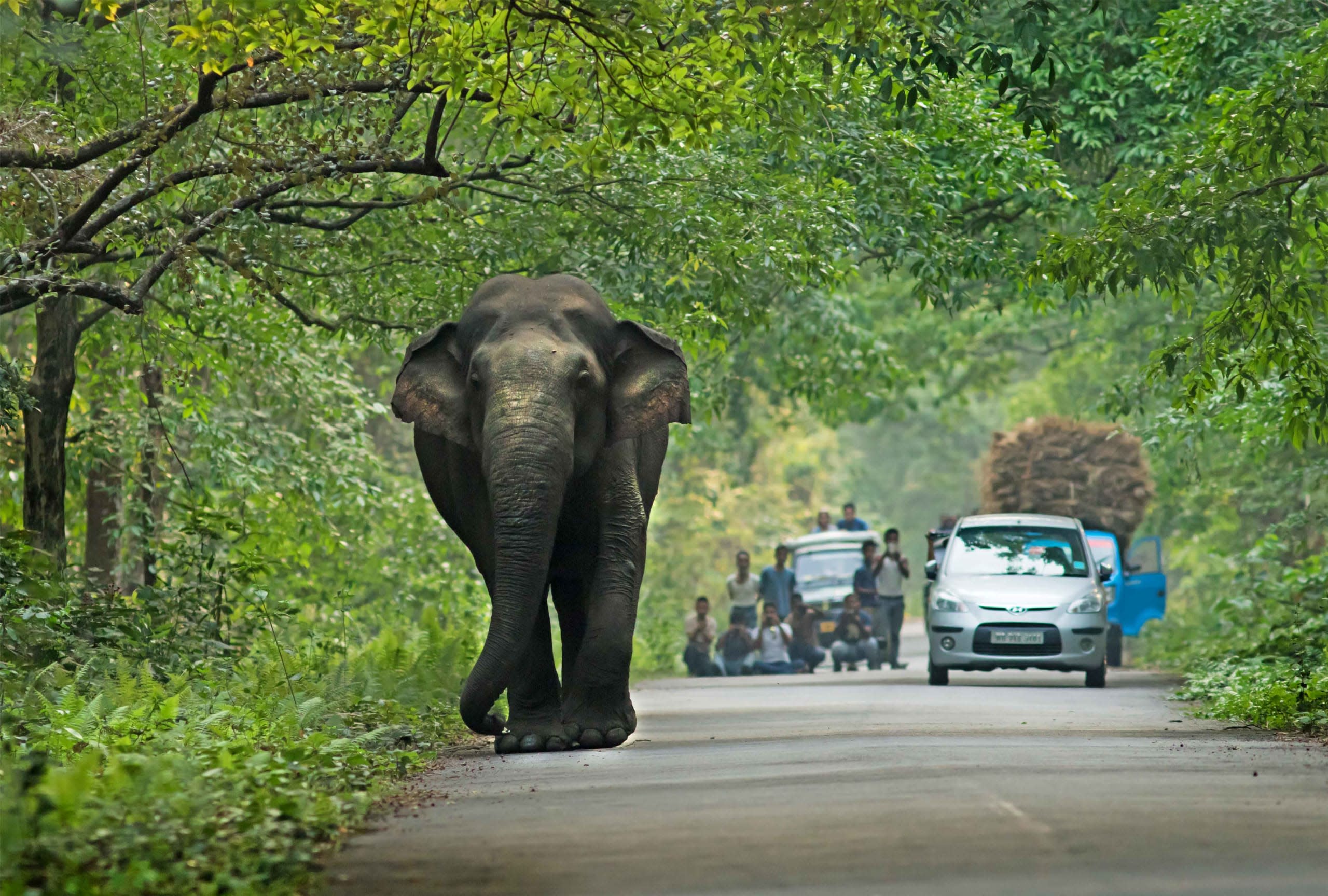 Listen to this article
•
15:34 min
Listen to this article
•
15:34 min
The start of November 2021 was not great for Dushtu. He visited the fields of Panijhora, a forest village in the Himalayan foothills of West Bengal. The fields were full of ripe paddy, with a promise of a good meal. He was confused to find metal wires and bamboo poles all around the fields separating him from his prized meal. Being a middle-aged makhna (tuskless bull elephant) in his prime, he cared little for the flimsy fences put up by the food producers. Dushtu confidently barged into the fence with utter disdain and was in for a rude shock.
The shock was metaphorical and literal. The villagers of Panijhora had installed a solar-powered fence to keep elephants and other herbivores away from their crop fields. Dushtu had heard of these installations from his peers but did not expect such firm resistance from the people of Panijhora, a place he’d been visiting on and off for over a decade. The people were not as aggressive towards him as in other places. Dushtu, in turn, was also more accommodating of the people and did not mind them coming close with flashlights and the occasional firecracker to scare him away from the fields. Disappointed and hungry, Dushtu returned to the adjoining Chapramari forests to prepare a plan to breach these discourteous intrusions to his supper.
The next evening, Dushtu was back with more confidence, determined to find a weak spot in the fence. He expected a slight slip-up on the part of his human neighbours, one that would let him enter the paddy fields. Hidden cameras tracking Dushtu’s movements revealed a long night of walking along the fence, trying to touch various parts. Each time, disappointment and frustration were visible in his reactions. The sudden rains made it even more difficult for him as the wet earth meant the solar fence was even more effective. Dushtu’s friends from the bull elephant fraternity explained that they had learned that their tusks did not get the electric jolt and that the fences have poles that can be easily dislodged. While Dushtu did not have tusks, the information about the poles being vulnerable spots gave him hope.
With new-found vigour, Dushtu sauntered into the field and tried to wrap his trunk around the flimsy bamboo pole. He was thrown back as soon as he touched the poles, these humans were one step ahead of him, and the poles were powered too. The fence construction was based on design inputs from elephant experts who studied how elephants breach the weak points of fences. Dushtu needed to go back to the drawing board. He had a sudden spark (not the literal one this time) while wandering aimlessly and dejected near the fence late one night. His peers had told him that one could push a tree onto the fence and walk across, but no tall trees were nearby. However, there were dense lantana bushes. Would they work?
Despite the thorns, Dushtu carefully uprooted lumps of lantana and started putting them on the fence. Before he could succeed, daylight broke, and he had to move back to the safety of the nearby forest. The people found it odd that lantana appeared piled up near the fence but did not give much thought to this strange development. The next night Dushtu was in action again as soon as the people turned in for the night. Multiple trips and bruises later, he was able to pile up enough lantana to create a buffer between him and his nemesis. His eyes tightly shut in anticipation of the jolt, Dushtu ran into the fence and crossed it as fast as his bulk would allow. To his surprise, he found himself inside without receiving any shock. The lantana barrier short-circuited the fence allowing Dushtu to surmount it.
Finally having his way, Dushtu feasted on the choicest plantains and paddy strands and had his fill before the locals found out and chased him away. Dushtu’s victory was short-lived as the next day, all lantana bushes around the fields were cleared and burnt by the people of Panijhora. Dejected and frustrated, Dushtu headed back to the forests. His ploy and weeks of planning and learning had been rendered useless.
The paddy has been harvested too, and Dushtu will have time to plan until the maize ripens in another five months. Till then, the people of Panijhora were happy to get a harvest of rice that would feed their families for a year, their first such harvest in many years, thanks to their collective action.
Note: The long-term persistence of wild elephants depends on how we share space with them, as shrinking forests have forced them to adapt to living with people and moving through human-use landscapes. However, the communities who bear the costs of this coexistence need our urgent support so that the cultural acceptance towards these sentient species does not erode over time. The author has studied and fostered coexistence between people and elephants in India for over a decade and currently leads the Elephant Programme at WWF-India.












